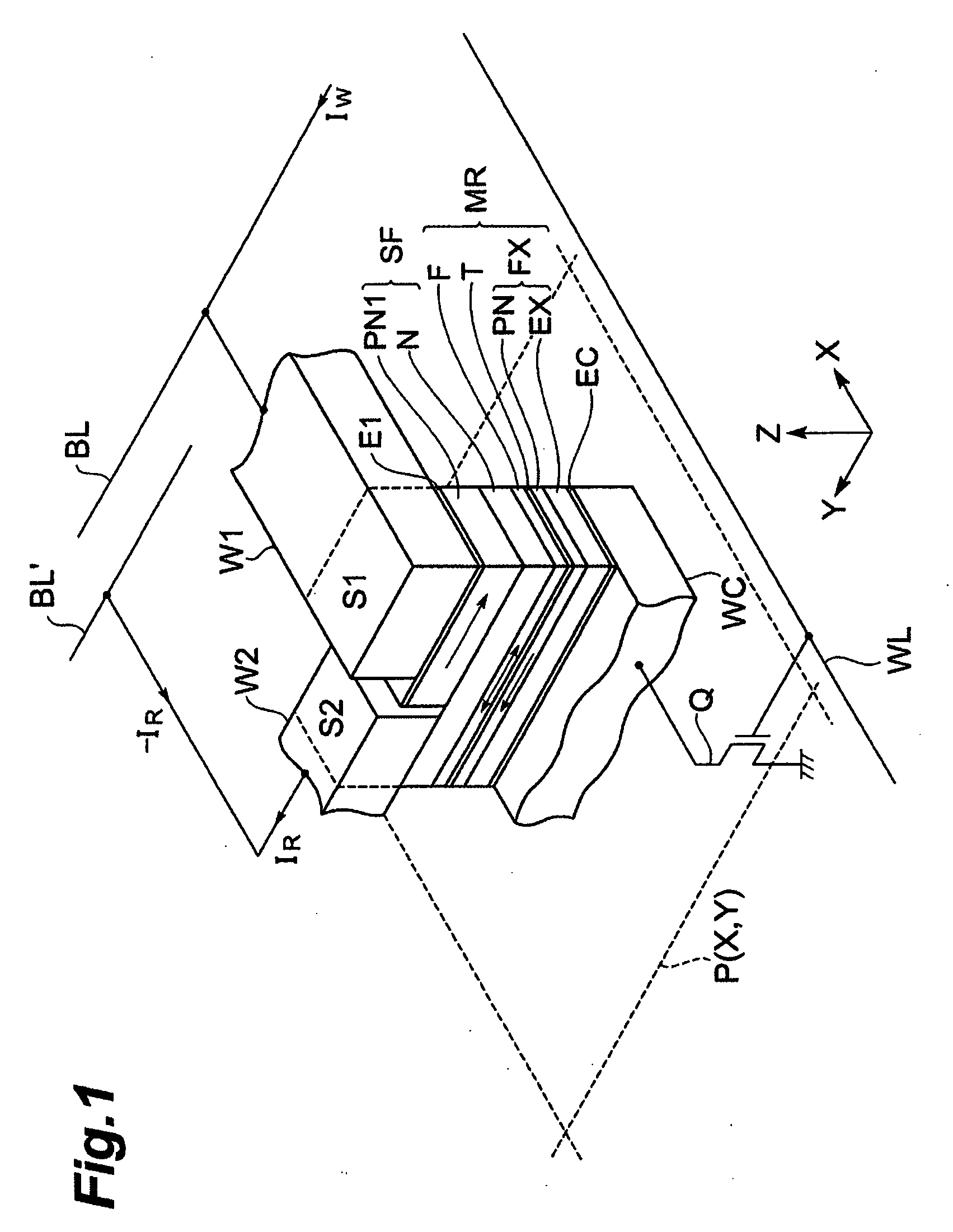Magnetic memory
a magnetic memory and memory technology, applied in the field of magnetic memory, can solve the problems of accidental magnetization reversal, heat generation in tmr element portions, breakdown due to voltage application, etc., and achieve the effect of reducing the shape anisotropy in the magnetization direction, shortening the circuit, and reducing the anisotropy of the writing curren
- Summary
- Abstract
- Description
- Claims
- Application Information
AI Technical Summary
Benefits of technology
Problems solved by technology
Method used
Image
Examples
Embodiment Construction
[0052]Hereinafter, a magnetic memory according to an embodiment will be described. Here, identical elements are designated with identical numerical symbols so as to avoid overlapping descriptions. The magnetic memory according to the embodiment is formed by arranging X-rows and Y-columns of a plurality of storage areas P (X, Y), and each storage area P (X, Y) includes a magnetoresistance effect element MR.
[0053]FIG. 1 is a perspective view of one storage area P (X, Y).
[0054]Each storage area P (X, Y) includes first wiring W1 for supplying a writing current IW, second wiring W2 for supplying a reading current IR, common wiring WC, a magnetoresistance effect element MR, and a spin filter SF provided on the magnetoresistance effect element MR.
[0055]The magnetoresistance effect element MR is a TMR element including an insulating layer T between magnetosensitive layer F and a pinned layer FX. The TMR element is an element using a phenomenon that the ratio of electrons passing through the...
PUM
 Login to View More
Login to View More Abstract
Description
Claims
Application Information
 Login to View More
Login to View More - R&D
- Intellectual Property
- Life Sciences
- Materials
- Tech Scout
- Unparalleled Data Quality
- Higher Quality Content
- 60% Fewer Hallucinations
Browse by: Latest US Patents, China's latest patents, Technical Efficacy Thesaurus, Application Domain, Technology Topic, Popular Technical Reports.
© 2025 PatSnap. All rights reserved.Legal|Privacy policy|Modern Slavery Act Transparency Statement|Sitemap|About US| Contact US: help@patsnap.com



